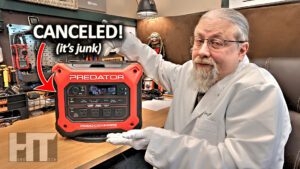
Harbor Freight PREDATOR 2000 Portable Power Station Review | Why Was It CANCELED and PULLED from Shelves?
Reviewing the Harbor Freight “PREDATOR” 2000w “lithium iron phosphate” LiFePO4 battery power station / solar generator. It’s NOT what it seems. Don’t buy without watching!
//– Best Bang for the Buck Alternatives –//
PECRON 2400LFP $599: https://gohobo.io/2400lfp use code HOBO599E24
PECRON 1500LFP $569: https://gohobo.io/1500lfp use code HOBOE1500LFP
BLUETTI ELITE V2 $949: https://gohobo.io/elite200 code HOBOE2V2
BLUETTI AC200L $999-$1099: https://gohobo.io/ac200l
BLUETTI AC180 $499: https://gohobo.io/ac180
ECOFLOW DELTA 2 MAX $1044: https://gohobo.io/d2max or https://gohobo.io/d2maxamz use code 25EFMFHOBO
ECOFLOW DELTA 3 PLUS $616: https://gohobo.io/d3p or https://gohobo.io/d3pamz use code 25EFMFHOBO






You must be logged in to post a comment.